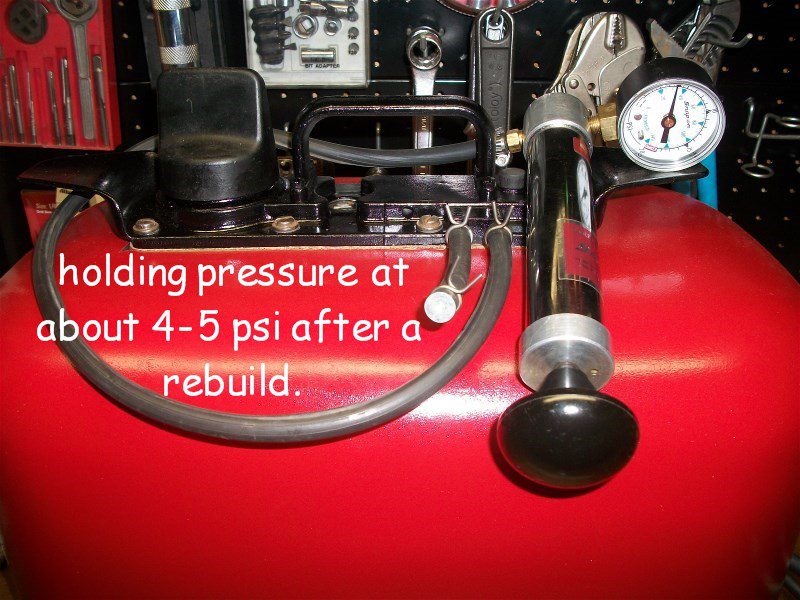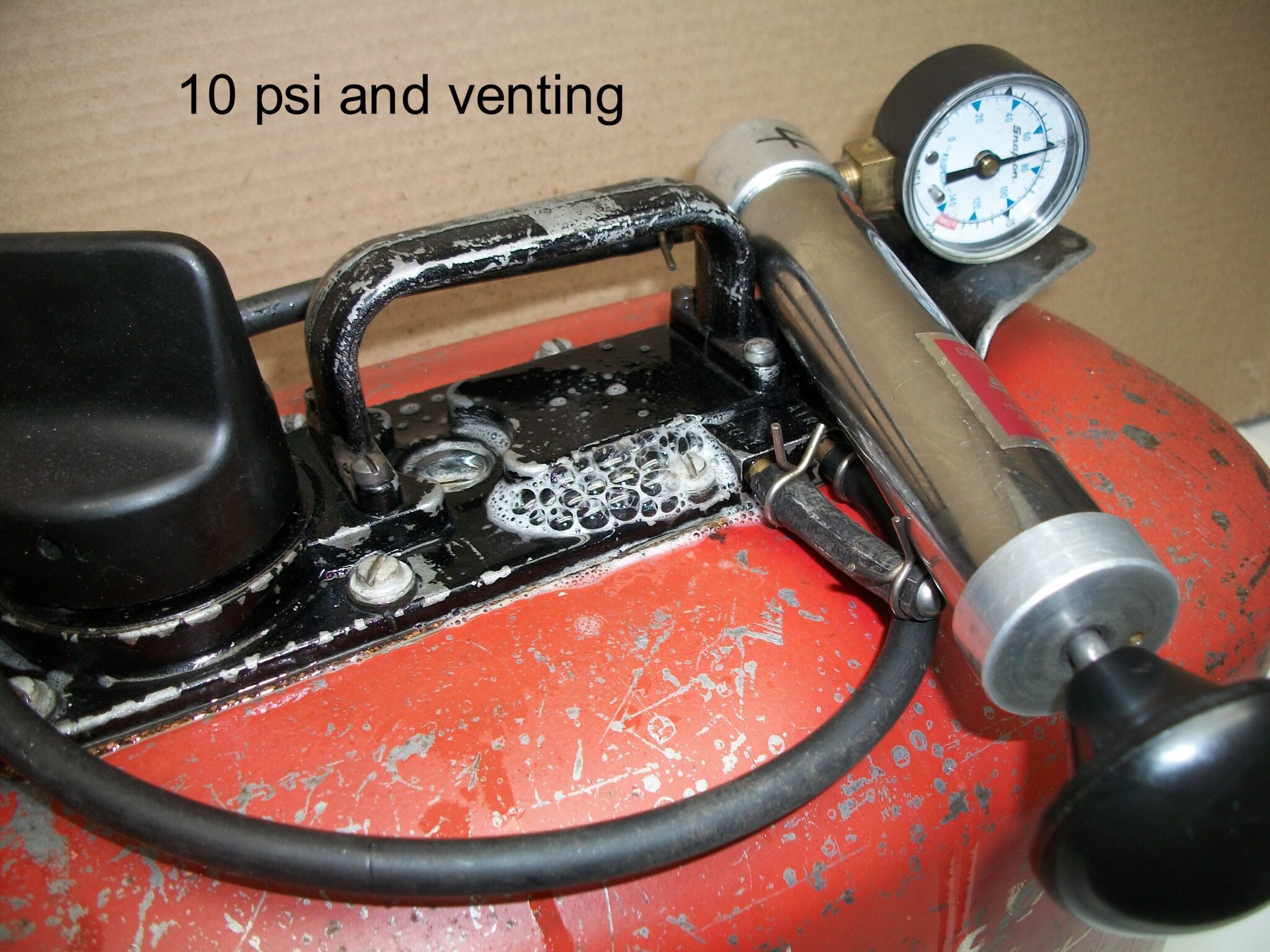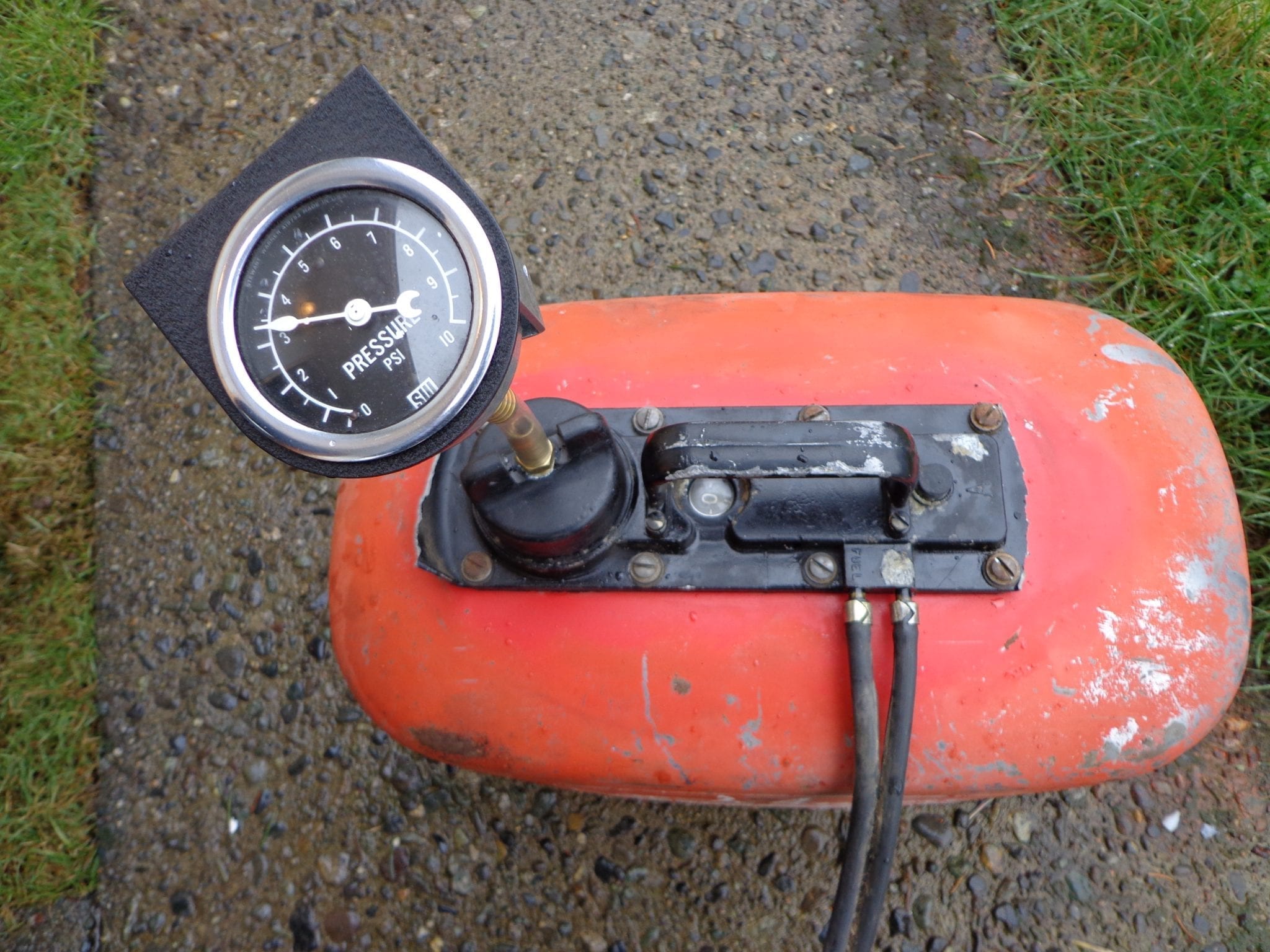Home › Forum › Ask A Member › Pressure rating for OMC 1950’s tanks
- This topic has 31 replies, 14 voices, and was last updated 2 years, 7 months ago by
fleetwin.
-
AuthorPosts
-
November 30, 2022 at 9:01 pm #269556
I posted this on the Technical page but am reposting it on this page since only members have access to the Tech page……….
I write articles for other boating related magazines and am currently writing an article addressing the false rumor that the OMC pressure tanks of the 1950’s can explode because they are “pressure” containers. The pressure relief valve vents at 6-7psi and the engine itself cannot produce much more than that amount. When OMC went to single line tanks, they still are pressurized from simple expansion of the air inside due to heat from the atmosphere.
So, here’s the question: Does anyone have documented information as to the working/test pressure of the metal fuel tanks from the 1950’s? I have spoken with 2 retired OMC tech reps and also a retired OMC South East Sales manager, and they don’t have any information. Google searches fail to turn up information. All pressure vessels have a pressure rating. What is it for the OMC tanks? Even Mercury had a pressure tank.
The reason for the article is based on a question I asked a participant at an ACBS show; “Why aren’t you using a period correct engine on your boat”? The reply was; “Because those engines used a pressure tank that can blow up”!
I look forward to answers to this discussion,
George
December 1, 2022 at 5:45 am #269565It sounds like the guy was more of a varnish guy than a mechanic. I think that’s the main problem. While I have no specific documentation either, I can’t think of any way they could go much higher than the 6 or 7 psi that you mention. I personally have NEVER heard even a RUMOR of one “blowing up.” Today’s EPA-compliant, plastic fuel tanks that bulge up like a balloon on a hot, summer day, seem much more dangerous to me than a ’50s pressure tank.
Long live American manufacturing!
December 1, 2022 at 6:50 am #269568George, I pumped up a tank to 10 psi and squirted suds on the vent to show it releasing air. The release is slow but it does vent. I pumped it up to 10 just to get more action from the bubbles for the video, although I believe it would release at 6-7.
(I’m going to do another one at 6-7 psi in a little while).
December 1, 2022 at 7:50 am #269574Thanks everyone, …..but, this is not what I need. I do appreciate the test that shows the vent works properly as designed. I, as already previously stated, know the vent pressure relief’s designed rating. What I’m trying to establish is the safety margin between the relief and the tank’s rated working pressure.
I’ll bet the tank could easily hold 50psi, but without the engineered rating, speculation is not the same as documentation.
Sooner or later, I’ll get that information….just need to find someone who knows it!
George
1 user thanked author for this post.
December 1, 2022 at 11:06 am #269583Dear George,
One more reply that doesn’t really answer your question but I still wanted to submit my experience and thoughts about the pressurized fuel tanks.
I’m 72 years old so as a youngster living on a river next to a marina that was heavily visited by weekend boaters, I directly witnessed a lot of incidents involving pressurized tanks. Those that I didn’t directly witness, I could look at the remains of the boat as they were almost all towed/brought back to the marina by the Fire Department for the insurers to assess and some time, unfortunately to allow for Coroners’ inquests.
Indeed many of those incidents were explosions BUT none were from the fuel tank rupturing. It invariably resulted from gasoline vapours escaping the tank upon fill-up or slow-leaking from the cap and/or fuel lines connections while in use. In those days, almost everyone was cigarette smoking which only compounded the risk of fire onboard.
We had a double-line fuel tank 25 hp Evinrude at that time and my dad was adamant about safety procedure in all phases of its use. Up to this day, I still remember the hissing noise of released tank pressure and the strong smell of gasoline it carried. No wonder it could ignite violently in what most people would call an explosion.
Mind you, switching to single line fuel tanks drastically lowered the occurrence of such incidents but did not eradicate them as vapours would still be released upon fill-ups and too many people would not care to take the tank off the boat during fill-ups, over fill or spill gasoline all over it.
I hope you will publish your study results in AOMCI’s magazine.
Regards !
Bidddaddydan
Montreal (Quebec) Canada
There are no old outboards, just machines so well built, they have outlasted their owners !
December 1, 2022 at 12:53 pm #269586And that’s the reason tanks are to be removed from the boat for filling!
I’m quite sure the relief valve fully opens somewhere around 11-13 PSI. The operating pressure is much less than that, around 3-5 PSI when I tested one with several different motors one day. I doubt if they would survive at 50 PSI as the large flat bottom would probably blow out long before that.
This gives me an idea. Maybe I should hook up a donor tank to 200′ of air line and slowly raise the pressure with a regulator mounted at the compressor end and see just how much pressure it can take before something lets loose.
-
This reply was modified 2 years, 7 months ago by
 Mumbles.
Mumbles.
December 1, 2022 at 1:29 pm #269590Just a quick comment. Suppose the guy sees the air escaping from a leaking relief valve’s exit hole and “fixes” it by plugging the hole. Problem fixed. Yeah, right.
December 1, 2022 at 7:26 pm #269601Good point Frank! Sort of like all those posts where people see the oozing coming from the lower unit drain hole!
It is my thinking, since I was a certified DOT re-test facility for pressure tanks, that when OMC had those tanks built, there had to be a rated maximum pressure. Maybe, since they were designated “fuel” tanks, there was no need to have a rated pressure? I’ve got one more OMC person to call but couldn’t because I didn’t have his ph#,—but now I do. He was one of the V.P.s in the racing division and maybe he knows.
George
December 1, 2022 at 11:08 pm #269604George, your question raises another… I wonder if there is a pressure test requirement for all “certified”/DOT gasoline containers? And what the vapor pressure vs temperature curve looks like for gasoline?
Joe B
December 1, 2022 at 11:13 pm #269606I answered one of my own questions … 10.5 PSI max vapor pressure per the EPA ….
Volatility is the property of a liquid fuel that defines its evaporation characteristics. RVP is an abbreviation for “Reid vapor pressure,” a common measure of and generic term for gasoline volatility. EPA regulates the vapor pressure of gasoline sold at retail stations during the summer ozone season (June 1 to September 15) to reduce evaporative emissions from gasoline that contribute to ground-level ozone and diminish the effects of ozone-related health problems.
EPA established a two-phase reduction in summertime commercial gasoline volatility. These rules reduce gasoline emissions of volatile organic compounds (VOC) that are a major contributor to ground-level ozone (smog). Phase I was applicable to calendar years 1989 through 1991. Depending on the state and month, gasoline RVP was not to exceed 10.5 pounds per square inch (psi), 9.5 psi, or 9.0 psi. Phase II is applicable to 1992 and later calendar years.
-
This reply was modified 2 years, 7 months ago by
-
AuthorPosts
- You must be logged in to reply to this topic.




